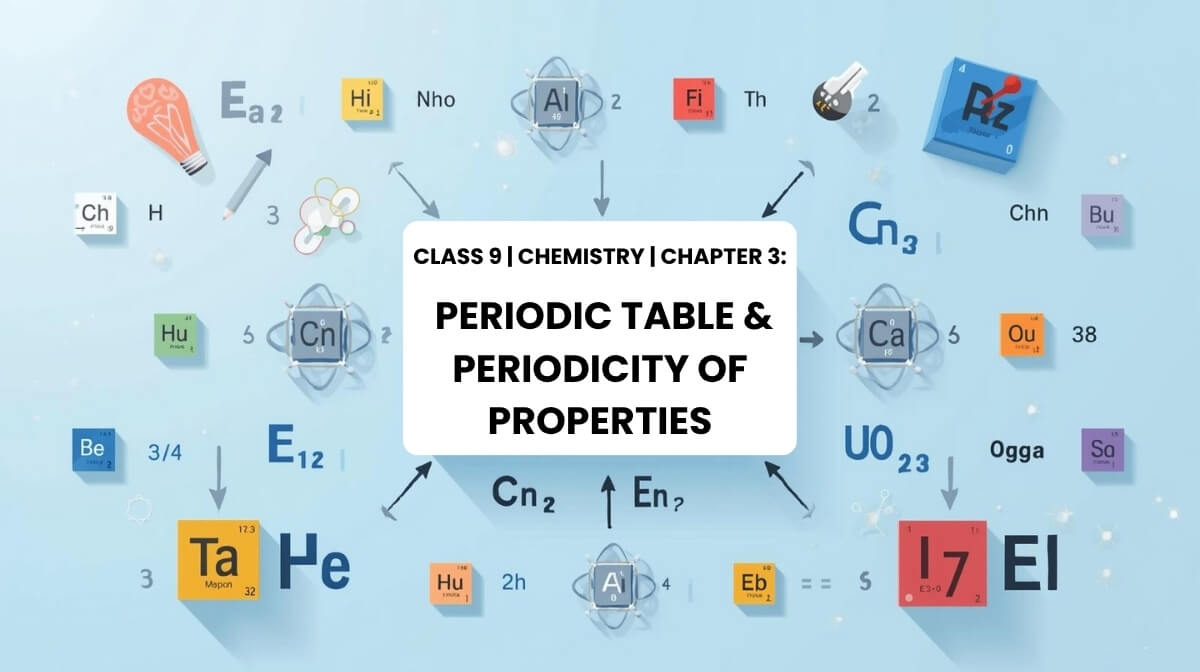This chapter explains how elements are classified in the periodic table and how their properties change in a predictable way. These MCQs are designed to help students prepare for exams by testing their understanding of periodic laws, table arrangements, and property trends.
1. Who is credited with formulating the Periodic Law?
- A. John Dalton
- B. Henry Moseley
- C. Dmitri Mendeleev ✅
- D. Antoine Lavoisier
Explanation: Mendeleev arranged elements in increasing atomic mass and observed repeating properties, leading to the Periodic Law.
2. What property did Moseley use to arrange the elements in the modern periodic table?
- A. Atomic mass
- B. Atomic number ✅
- C. Valency
- D. Electron affinity
Explanation: Moseley rearranged elements according to increasing atomic number, which resolved anomalies in Mendeleev’s table.
3. Elements in the same group have:
- A. Same atomic masses
- B. Same number of valence electrons ✅
- C. Same atomic radii
- D. Same densities
Explanation: The same number of valence electrons results in similar chemical properties for elements in the same group.
4. Which period contains only two elements?
- A. 1st period ✅
- B. 2nd period
- C. 3rd period
- D. 4th period
Explanation: The first period has only hydrogen and helium.
5. What happens to atomic size across a period from left to right?
- A. Increases
- B. Decreases ✅
- C. Remains constant
- D. Doubles
Explanation: Increasing nuclear charge pulls electrons closer, reducing atomic size across a period.
6. Which group contains noble gases?
- A. Group 1
- B. Group 2
- C. Group 18 ✅
- D. Group 17
Explanation: Group 18 elements are noble gases with full outer shells, making them chemically inert.
7. Which property increases down a group?
- A. Ionization energy
- B. Atomic radius ✅
- C. Electronegativity
- D. Electron affinity
Explanation: Adding electron shells increases the distance between nucleus and outer electrons, increasing atomic radius.
8. Which element is a halogen?
- A. Oxygen
- B. Chlorine ✅
- C. Neon
- D. Sodium
Explanation: Halogens belong to Group 17 and are highly reactive nonmetals.
9. The horizontal rows in the periodic table are called:
- A. Groups
- B. Periods ✅
- C. Series
- D. Blocks
Explanation: Periods are horizontal rows, each corresponding to the filling of a principal electron shell.
10. Which block contains transition elements?
- A. s-block
- B. p-block
- C. d-block ✅
- D. f-block
Explanation: Transition elements are found in the d-block of the periodic table.
11. What is the periodicity of properties?
- A. Properties change randomly
- B. Properties remain constant
- C. Repetition of properties at regular intervals ✅
- D. Change of state of matter
Explanation: Periodicity is the repeating pattern of chemical and physical properties as elements are arranged by atomic number.

